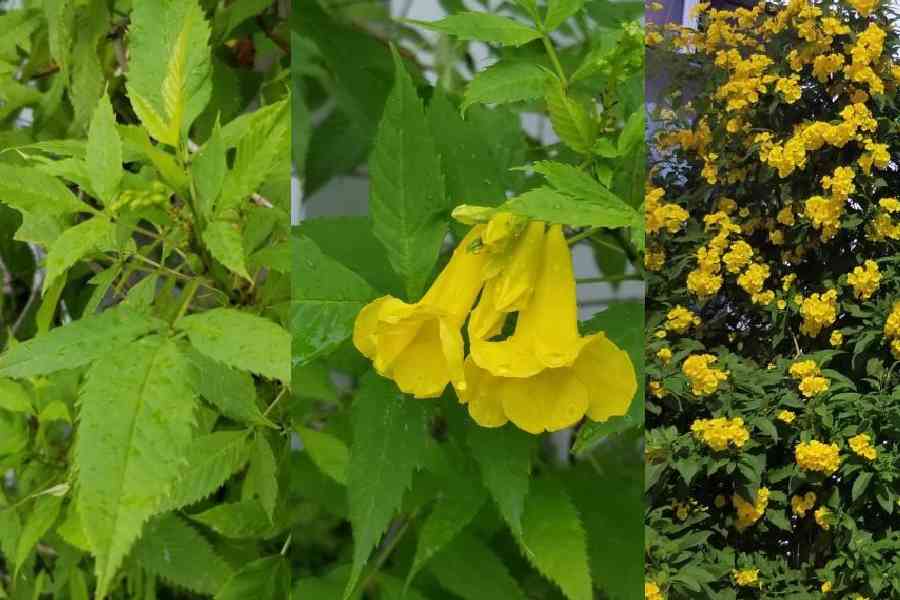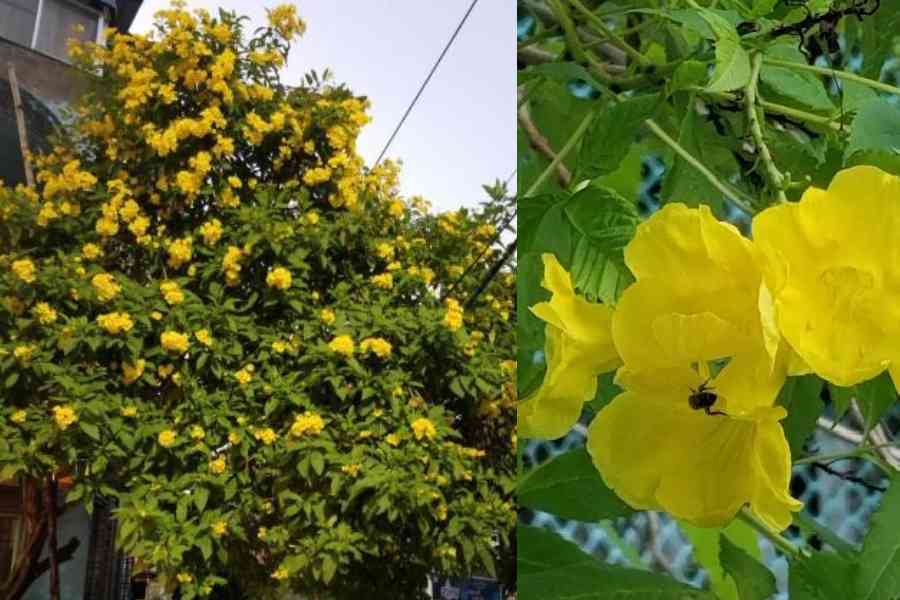If you’ve seen yellow trumpet-shaped flowers of Tecoma in bloom, you know why they’re called “Yellow Bells.” These drought-tolerant plants have become popular landscaping choices for their spectacular appearance and ease of care. No wonder they are popular across our twin townships.
The Tecoma or Yellow Bell, is an irregularly shaped, deciduous shrub. It can grow from 10ft to 30ft in height. The plant has several stems and slender, erect branches. Clusters of large, trumpet-shaped, yellow flowers with thin, red vertical lines along the inner throat are quite showy against the olive-green leaves.
This plant is native to the tropical Americas and West Indies. Its common names are Yellow Elder, Yellow Trumpet Flower, Yellow Trumpetbush etc. The plant can grow in full sun on any well-drained soil and can tolerate heavy rain, making it well-suited to Indian conditions. It can bloom round the year but its primarily bloom time is August to September and December to March

Arijit Poddar
Tecomas are not high-maintenance plants. In fact, these shrubs are tolerant of drought, heat, cold and heavy rain. They can be grown in pots or outside in the garden.
Light
Yellow Bells thrive in full sun but can be grown in partially shaded areas too. However, Tecomas grown in partially shaded areas will not grow as tall or vigorous as those that receive minimum six to seven hours of sunlight every day.
Soil
Yellow Bells can be grown in many soil conditions but they grow best in rich, slightly moist, well-draining soil. Applying a healthy amount of compost to the soil is an effective way to ensure adequate draining while providing important nutrients. Clay, sand, loam, alkaline, acidic, well-drained soil can be used for Tecoma.
Water
Yellow Bells prefer dry conditions, or maybe slightly moist soil conditions. They are drought-tolerant and can handle dry spells. Make sure not to over-water, as this can lead to root rot. Natural rainfall is often enough to keep this plant thriving.
Temperature and humidity
Yellow Bells are naturally found in warm climates. They are both heat and cold tolerant but do not grow well in low temperatures. This tough shrub can withstand both droughts and humid climates.
Fertiliser
Tecomas don’t require additional fertiliser. But for vigorous growth and spectacular bloom, add a well-balanced fertilizer (N:P:K-19:19:19) once during the growing season. If you are growing it in a container, feeding with liquid organic fertiliser once a month can work wonders for the plant.
Pruning

Annual pruning can help a Yellow Bell shrub maintain its shape and encourage new healthy growth. Prune in the month of December. Remove old growth, inner branches and cut the old woody growth back. If there is no green wood growth, cut the Tecoma plant to the ground. It will re-grow quickly. Prune and pinch spent flowers and pods to encourage blooming and bushiness.
Propagation
These plants grow easily from cuttings and can also be propagated from seed.
In April-May, use a sharp knife to remove a tip cutting that is 6-12 inches long. Bury the cut end into rich, well-drained moist soil. Place the cutting in a warm area with bright, indirect lighting. Keep the soil moist, but not soggy, by spraying water regularly. Once there are several inches of new growth, remove and repot into a larger pot. After hardening off the plant, move it outdoors.
Crack open the pods and remove the seeds. Fill a small pot with rich, well-draining soil and lightly cover the seeds in the growing medium. Water the soil to keep it moist. Keep the pot in a warm area with indirect sunlight. Seeds will germinate in two to three weeks. Seedlings are easily transplanted and will bloom within two years.
